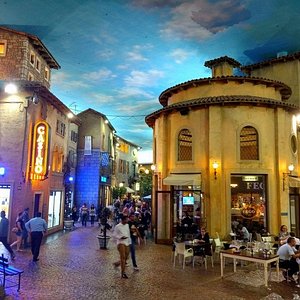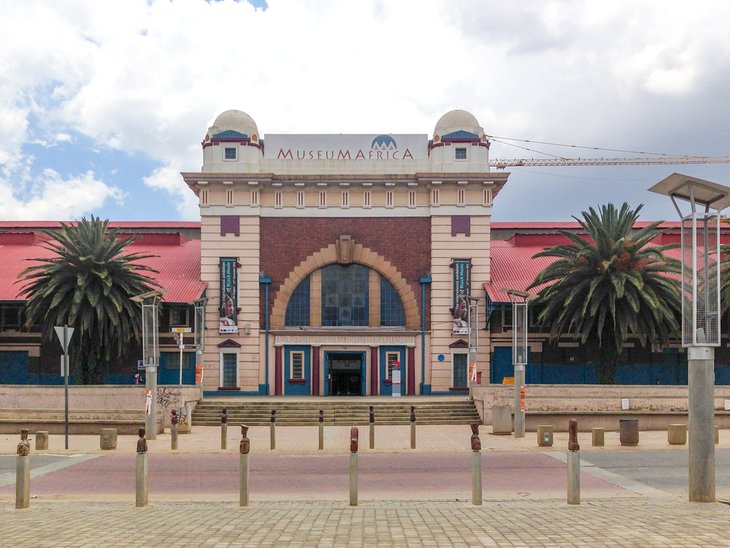The Ultimate Guide To Johannesburg North Attractions
The Ultimate Guide To Johannesburg North Attractions
Blog Article
Not known Factual Statements About Johannesburg North Attractions
Table of ContentsThe smart Trick of Johannesburg North Attractions That Nobody is DiscussingSome Known Factual Statements About Johannesburg North Attractions Indicators on Johannesburg North Attractions You Need To KnowThe 10-Second Trick For Johannesburg North AttractionsHow Johannesburg North Attractions can Save You Time, Stress, and Money.Top Guidelines Of Johannesburg North Attractions
The city owes its location to the visibility of an also much more valuable source: gold. The city expanded on the side of the Witwatersrand Key Coral reef, a subterranean stratum of gold-bearing quartz-silica corporation that arcs for thousands of miles beneath the Highveld. Most of the gold mines in the city discontinued operation in the 1970s, yet in its day the Witwatersrand gold market made up even more than 40 percent of the world's annual gold production.Johannesburg has a warm environment. Summertime temperatures balance about 75 F (24 C); wintertime temperature levels balance about 55 F (13 C) and only occasionally dip below freezing. The city takes pleasure in regarding eight hours of sunlight each day in both winter months and summer. Rainfall averages regarding 28 inches (700 millimetres) per annum, but the overall varies considerably from year to year.
What rain the city receives drops virtually specifically in the summer months, typically in amazing late-afternoon electrical tornados., where lots of locals still rely on coal for fuel.

Some Known Facts About Johannesburg North Attractions.
The equilibrium of the city is inhabited by whites. Lodging differs in personality and quality. Soweto is notorious for its endless rows of municipally constructed, two-room matchbox homes, yet it additionally has a couple of thriving enclaves along with bristling squatter camps, where 10s of thousands live without water, electrical energy, or cleanliness facilities.
Physical growth, although somewhat restricted by transportation, continued quickly as migration to South Africa, and Johannesburg particularly, raised dramatically. This trouble was solved in the 1930s when the auto was introduced in automation to South Africa. Automobiles were, for the a lot of part, constrained to the rich, and allowed them to move to the north of the city and commute into the centre.
Many inadequate suburbs were combined, with bad blacks and whites living together, although the rich suburban areas were normally scheduled for whites.
The previous system of eleven phoned number areas was reorganised in 2006. Marshalltown, as seen from the top of the Carlton Centre. The M1 and M2 run behind the structures, and the southern residential areas prolong past the freeway limit. The internal city of Johannesburg is located within the city's Area F. The estimated population of the area is 200,000, go to the website [] The number of people living in the internal city on an informal basis is unknown, as numerous are unlawful immigrants. The Web Site majority of higher-income homeowners and white people have transferred to the north residential areas and have been changed by lower-income black people. The unemployment, education and learning, and age profiles of the area are all unidentified, as a result of the trouble of getting dependable details regarding the area.
Unknown Facts About Johannesburg North Attractions
Centred on the CBD, the area includes the suburban areas of Yeoville, Bellevue, Troyeville, Jeppestown, and Berea to the eastern. To the west it infects Pageview (Johannesburg North attractions) and Fordsburg. There are tiny enterprise zones to the south, such as City West-Denver and Benrose. Around 800,000 commuters travel through the central city every day, and it functions as a regional shopping node for site visitors from the southern suburbs. Yeoville and Bellevue have a mix of apartment buildings and solitary household units on tiny great deals. The region is situated on a hilly divide that runs from east to west.

Johannesburg Arena, a training school for both the Golden Lions and Orlando Pirates, is adjacent. The eastern suburban areas of Johannesburg lie in the city's 7th [] and 9th [] regions. The area is likewise functionally incorporated with East Rand border communities beyond the main boundary of Johannesburg, such as Bedfordview and Edenvale (both part of Ekurhuleni Metropolitan District).
The Basic Principles Of Johannesburg North Attractions
R. Tambo International Flight Terminal). The eastern suburban areas are some of the oldest areas of Johannesburg, there are big communities of Jewish and other European backgrounds, most of the populace is English speaking. There are three golf courses along with a variety of safeguarded ridges with viewsites. There are a number of strong and up-market enjoyment and buying areas in the eastern such as the Eastgate Buying Centre and the Greenstone shopping center.
Initially built to house male migrant employees, many have been boosted as homes for pairs and families. The suburb was not traditionally allowed to create work centres within the location, so practically all of its locals are commuters to various other components of the city.
Getting My Johannesburg North Attractions To Work
The N1 Western Bypass links the northern suburban areas with the north-western residential areas. The suburbs in the north suburbs are generally formal, without considerable locations of informal real estate, or real estate that does not have an irreversible framework. This is a well established location, there is a trend of land usage adjustment from property to industrial, specifically along main arterial roads and around established nodes.
Roadways to the east and west are less well developed, as there are no highways taking a trip in that instructions. Towards the northern border of the city, the thickness of growth decreases, leaving huge locations of primitive land around Midrand.
Excitement About Johannesburg North Attractions
, which is situated on a hill neglecting the inner city and Hillbrow.
Report this page